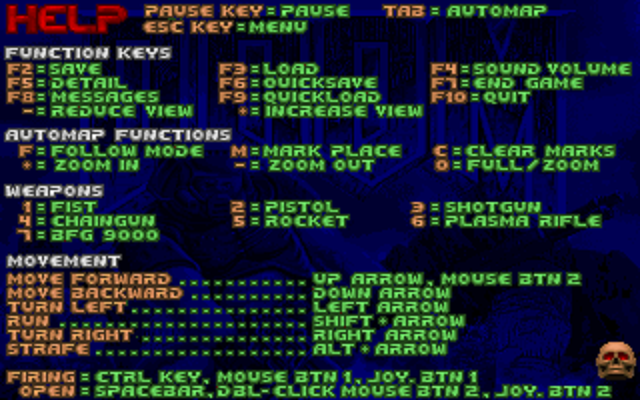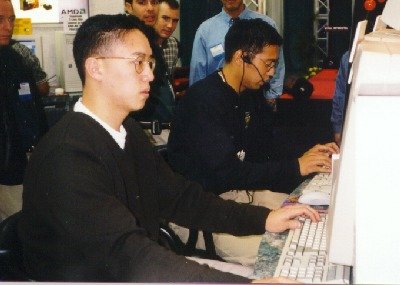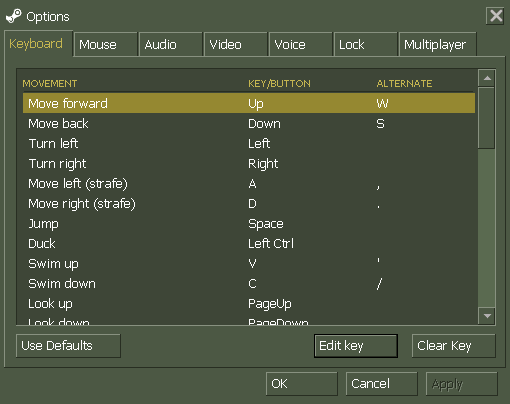How WASD Becomes Standard Keys on Gaming PCs?
The WASD button has become the most common button for PC gaming today. Try to visit each PC gamer’s house, then you can be sure that their WASD buttons look dirtier or faded than the other buttons. But how can these 4 buttons be the main choice of character movement control in PC games today? How was the beginning of the creation of WASD as a standard button on PC gaming? Let’s go back to 20 years ago.
We are now officially on the platform Tiktok! Follow our Tiktok account at @gamebrott.com to find various information and our other interesting video content.
Recall arrow keys
Let’s start with the early 90’s. Unlike now, PC is not a platform yet master race to play games. The games released at this time were dominated by puzzle games, strategy, and other genres filled with text, in contrast to console games on the NES and Sega Genesis which focused on action rather than dialogue or narration. The popularity of the PC as a new gaming platform rose after its arrival Doom in 1993, the FPS game from Software ID This seems to have made the PC relevant as a gaming platform and produced hundreds of “copy” games that try to compete with the popularity of this game made by John Carmack, John Romero and Tom Hall.
At this time PC games still use arrow keys as a control for character movement because these buttons are considered the most reasonable because of the symbols, making players who first try PC games will immediately think of the four arrow keys as buttons to move characters. These arrow keys are used to go forward, backward and rotate the camera right and left. Where’s the button strafe aka oblique right and left? You have to press ALT and arrow keys at the same time. If you’re playing PC games now with this control configuration, chances are you won’t be strong. But for games that don’t need aiming like the first Doom, this isn’t really a problem but it’s still not comfortable to play this way.

Transition to WASD
Then how can the initial WASD button shift the use of the arrow keys? No one can find out for sure who actually discovered WASD, but a person named Dennis ‘Thresh’ Fong can certainly be the figure who popularized this button configuration.

Fong is the first professional gamer ever based on the Guinness book of records, he is known for his skills in playing FPS in particular Quake which is also created by ID Software. In 1997, Fong won the Quake tournament after defeating Tom “Entropy” Kimzey with a score of 14-1. The highlight of his victory was not only the lavish prize of John Carmack’s Ferrari 328, but also the ‘weird’ controls he used while playing in this tournament. Fong uses his right hand to hold the mouse, and the five fingers on his left hand focus on 4 buttons that are now familiar to us – WASD.
Just like other PC gamers in that era, Fong previously played FPS like Doom and other FPS using arrow keys. Seeing FPS games at that time was not fully supported mouselook and the game didn’t require the player to aim up or down, playing this way became the most common way to play FPS games at the time. But after being constantly beaten by his sister Lyle who uses a keyboard and trackball, Fong begins to adapt to using a mouse. After experimenting with finding what buttons to go with this mouse, Fong found WASD to be the most suitable combination. After frequent practice with this WASD + Mouse configuration, he became one of the best FPS players of his era.
Fong doesn’t think he’s the inventor of WASD as a standard PC gaming button, but Fong’s presence really became the driving force behind why these four buttons became increasingly popular in the mid 90’s. Before Fong popularized WASD, many unique key combinations were created by FPS gamers at that time ranging from QWES, A-Shift-ZX, ESDF, and others.
“I don’t want to assume that I am the first person behind the creation of WASD. I accidentally found it. I’m sure a lot of other people use this button because it’s convenient for them. I think I just helped popularize the button for a lot of gamers, especially those who play FPS.”
Fong’s WASD control configuration was eventually used by ID Software as the default button for movement in Quake II which was released one year after the first game. Seeing ID Software as the god of PC gaming today, anyone will follow and “copy” what they do. It was at this time that PC gamers and other developers began to slowly abandon the arrow keys and turn to WASD as the new standard of PC control. Half Life became one of the first games to join the WASD configuration after Quake II was released. Other FPS games such as Tribe, Unreal, and others began to follow a similar configuration after PC gamers rated it much more comfortable than arrow keys.

Talking about Half Life, Valve basically doesn’t really like WASD as a standard button on PC gaming. Gabe Newell honestly said that he prefers to use ESDF to play PC games. For him, WASD makes his fingers feel too far from the keyboard and away from the keys typing other. Dario Casali who is a level designer from Half Life also has his own configuration for PC games, he considers ASXC to be the best configuration. natural in his hands, but he was forced to follow the WASD trend because the button is already well known to PC gamers.

Over time, the WASD button began to be not limited to FPS games only. A collection of other genres began to turn to this WASD button as the main button in the game. Non-FPS developers such as Blizzard, Maxis and Bethesda started using this “Thresh” configuration after it became more common for PC gamers and was considered the most comfortable button configuration because it kept the fingers on the left hand from being in a rigid position and made access keys like shift, ctrl, tab, and space are much easier than ESDF or other unique configurations. More than 20 years after this WASD “innovation”, it seems unlikely that any other button configuration will be born apart from these four buttons.
Don’t you use WASD to play PC games? What do you use and why?
Credits: PC gamer
Post a Comment for "How WASD Becomes Standard Keys on Gaming PCs?"